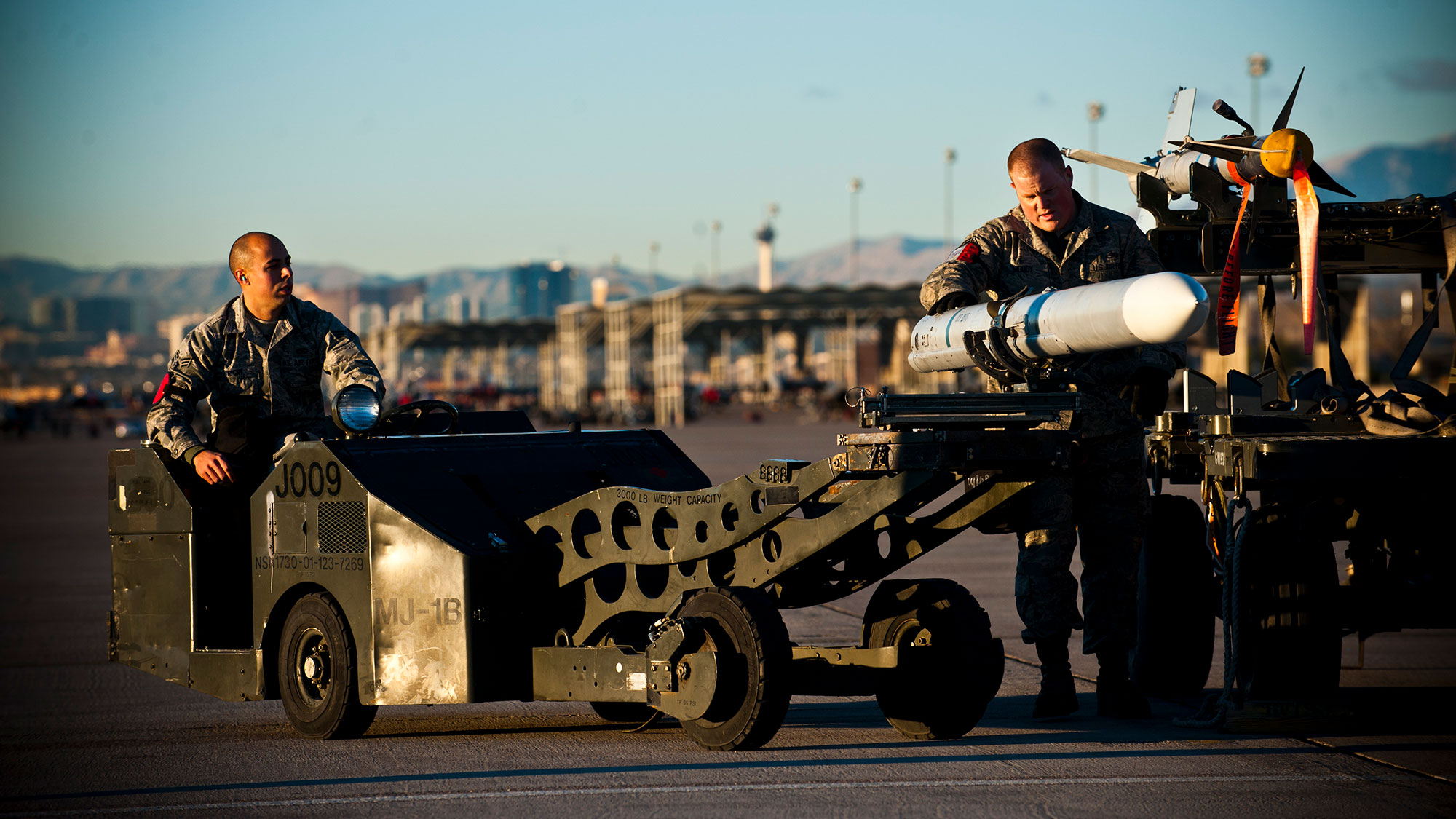

On May 31, the Department of Defense announced $300 million worth of additional military aid to Ukraine. In this latest package are four kinds of anti-air missiles—meaning missiles meant to shoot down threats in the air—including the AIM-7 air-to-air missile.
The Air Intercept Missile-7 (AIM-7) Sparrow is a guided missile with its origins in the 1940s. It saw its first deployment in 1958, though the missiles of that era are a far cry from the weapons deployed today. The modern version, AIM-7M, substantially improved from early days, has been in service since 1982. It’s used by the US, NATO allies like Italy, Spain, Canada, and others, as well as countries like Australia, Saudi Arabia, and Japan.
The AIM-7 is carried by aircraft to destroy other aircraft. In the May 31 package authorized for Ukraine, it is joined by three ground-based anti-air systems. These include Patriot missiles, which can target planes or cruise missiles, Stinger anti-aircraft missiles, which are human portable and especially useful against low-flying targets like attack helicopters or strafing jets, and Avenger air defense systems. The Avenger mounts multiple Stinger launchers on a turret on the back of a HMMWV (better known as a Humvee) vehicle, and pairs those weapons with a heavy .50 caliber machine gun. This gives it range and flexibility against both aircraft in Stinger range, as well as a cheaper weapon that can hit other flying enemies, like small drones.
“Russia has continued to wage a brutal, completely unprovoked war against Ukraine, launching yet more airstrikes and bombarding Ukrainian cities across the country,” said National Security Council spokesman John F. Kirby during a briefing at the White House. The release from the Pentagon paired that statement with the note that Russia recently launched 17 separate air assaults against Ukraine’s capital, Kyiv, in May.
“One of Ukraine’s most urgent requirements is ground-based air defense,” Secretary of Defense Lloyd J. Austin III said in the same briefing. “And this contact group will continue driving hard to help Ukraine defend the skies. In recent weeks, Russia has intensified its sordid bombardment of Ukrainian cities and infrastructure. And the Kremlin’s cruelty only underscores Ukraine’s need for a stronger, layered ground-based air defense architecture.”
The three ground-based air defenses make sense in light of this specific call. The AIM-7, which fits into an overall approach of arming Ukraine against Russian aircraft, requires aircraft to launch it. This May, several months after Ukrainian’s president Zelensky asked for artillery, tanks, planes, and Patriot missiles, the Biden administration joined other nations in agreeing to provide F-16 fighter-bombers to the country. These single-engine fighters, used widely across the world, are more than capable of carrying AIM-7 missiles, and while the US models may feature more advanced weapons, the AIM-7 is able to get the job done.
While the exterior form of the Sparrow has remained largely the same for its decades of service, how the missile finds and tracks targets has changed massively over the years. The first Sparrow missiles “used a beam-riding guidance system, in which an aircraft’s fire-control radar would lock on to a target and the missile would fly along the radar beam,” wrote Norman Friedman, in a history of the weapon. That fixed-beam path meant pilots had to keep their plane and radar directed in the same path as when they fired the weapon. It was a plausible use case for jets against propeller-powered bombers, but locking a pilot into a fixed route against a maneuvering plane like an enemy jet would render the missile easily beatable.
In April 1959, Popular Science boasted of an early improvement to the Sparrow III, noting the supersonic guided missiles “packs 50 percent more wallop than its predecessor.” Sparrow IIIs saw action in Vietnam, but the missiles were designed as a way for fighter pilots to shoot down bombers beyond visual line of sight. Over the skies of Vietnam, instead, pilots encountered fast flying and turning fighters.
The AIM-7M version in use today uses better radar and maneuvering, allowing it to track targets more closely and without requiring the firing jet to maintain a lock on the target. It’s a weapon that had success when used by US pilots in 1990’s Persian Gulf War, and one that would likely prove straightforward to use by Ukraine, once the weapon is attached to planes that can launch it.
This latest military aid is the 39th transfer of such equipment to the country, dating back to August 2021, when Ukraine’s war was limited to reclaiming the Donbas. That was before Russia’s full invasion in February 2022 transformed the ongoing war into an existential threat to Ukraine.
